Industry
MSPO 2021: Combatmate - MRAP-class Vehicle Featuring Polish Systems
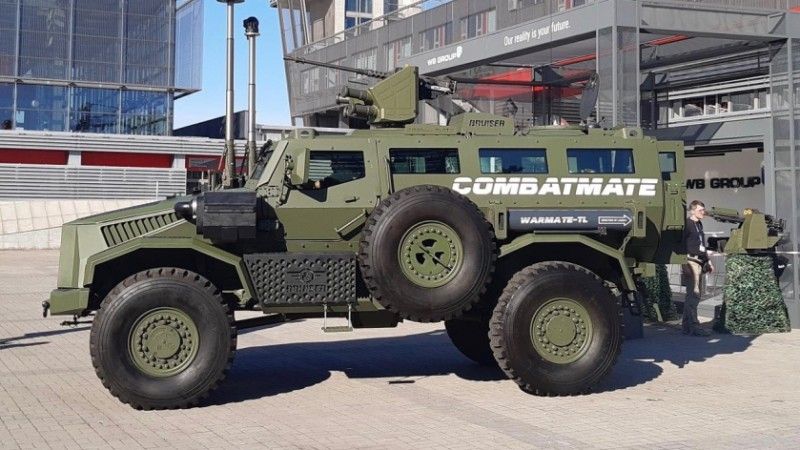
Combatmate platform, a Polish-South African take on a vehicle protected from mines/IEDs was one of the products premiered by the WB Group, during the 29th edition of the MSPO defence industry exhibition organized this year.
The vehicle is a result of fruitful cooperation with the South African Bruisertech company. It also serves as an interesting example of possible integration of the WB Group’s product on any given platform - this enhanced its lethality and operational/battlefield capabilities. Combatmate also capitalizes on long-term collaboration with the South African businesses, related to radio communications, vehicular systems, and other solutions within the defence and security domain.
Even though the product has been premiered at MSPO, it has been developed with the export market in mind. Numerous variants of the vehicle would be offered, including reconnaissance, uniformed services, and unmanned systems carrier versions.
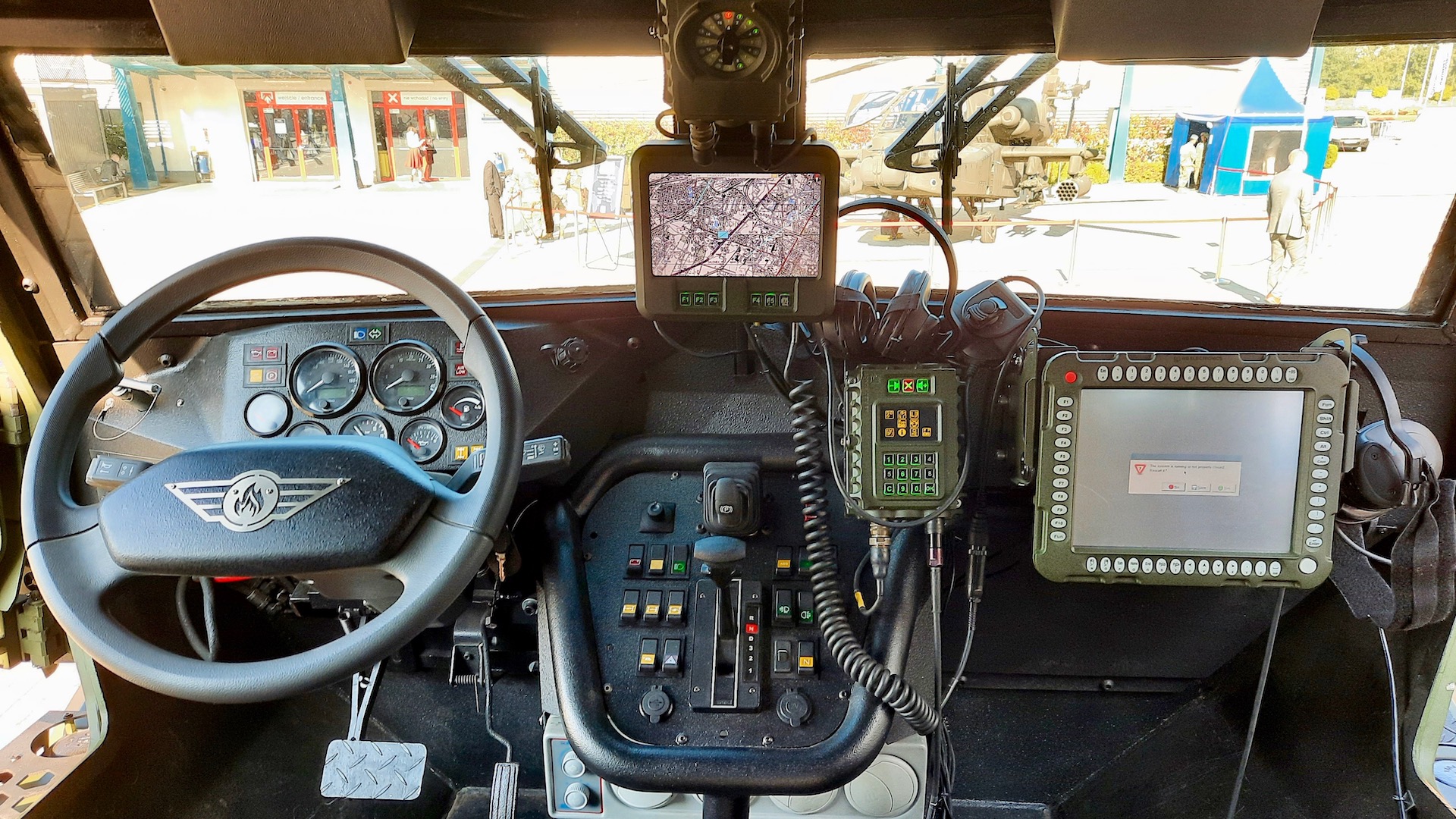
Systems and Integration
Systems and Integration
The South African vehicle features numerous solutions offered by the WB Group. These include the C2 system, as well as the armament. Combatmate features the vehicular version of the COMP@N radio (delivered by RADMOR, WB Group’s company, with power amplified adapter), ensuring secure UHF communications (TRANSEC, NETSEC, and COMSEC), and PERAD 6010 radio, that is used to establish communications with the troops outside the vehicle.
The WB Group’s FONET solution serves as the framework for the C2 system - a unified network for data transmission and voice communications. The vehicle features both the KOMUT-10TA central hardware unit of the FONET system (a specialized Linux OS computer), as well as individual crew terminals.
The command system is based around the proven integrated Topaz BMS - the terminal has been installed in front of the commander's seat. Additionally, a small terminal displaying a simplified map and a tac-view is available to the driver. The display in question may also be used to present information on the vehicle status, malfunctions, diagnostics, and so on. These functions are available once Topaz is connected, via FONET, with the CAN bus (Controlled Area Network). One should add that it is possible to remotely signal the necessity to supply spares or components that may have been damaged in combat. At the present stage, these functions have not been implemented.
The terminals available to the commander, and to the driver, may also display the imagery captured by the cameras installed on the vehicle. The commander may also view the Warmate-TL UAV operator’s display. The vehicle showcased in Kielce only featured one camera - in the back - making maneuvering easier.
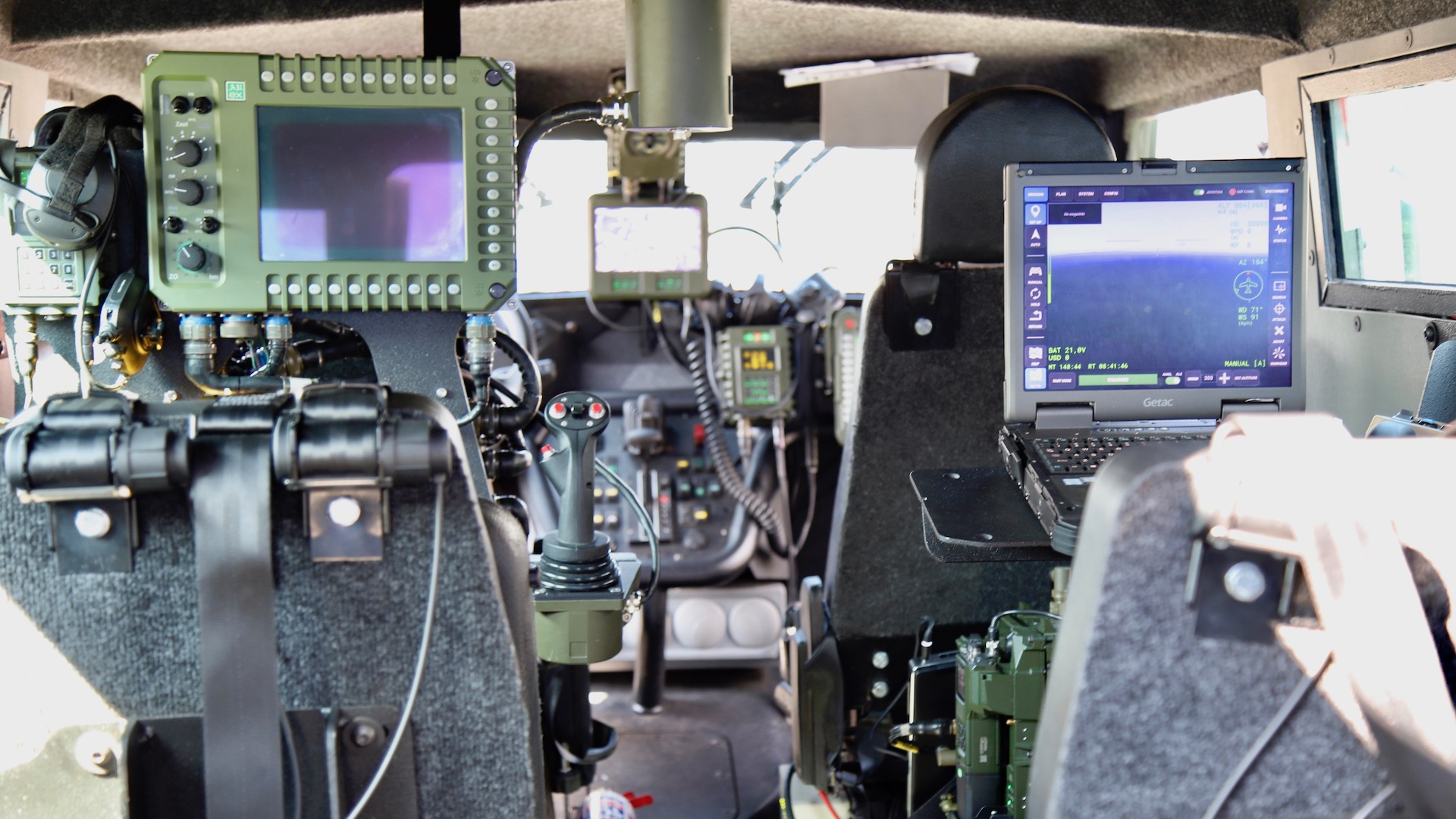
The vehicle showcased in Kielce also features the Arex ZSU-03 remote control weapons station, fitted with the .50-cal. M2HB machine gun, and four smoke grenade dispensers. The Arex ZSU weapon stations family was also premiered at MSPO (with the Arex company, based in Gdynia, being a part of the WB Group).
Digitally controlled electric motors of the weapons station make precise and rapid aiming possible.
ZSU-03 is a fully stabilized system, and this refers both to the weapons, as well as the targeting system. When ZSU is used, the target is displayed continuously on the monitor, when the armament is employed. This is important for the gunner. The weapon stations' weight is 203 kilograms (243 kilograms, if ammo and the M2HB machine gun are included). It features a color daytime camera with a 1920x1080 px CMOS 1/3" sensor, 640x480 px thermal imager with a non-cooled FPA bolometric sensor, and laser rangefinder, with wavelength of 1.54 μm and 50-4,000 meters range. Multiple-use Warmate TL (Tube Launch) loitering munitions launchers complement the armament of the vehicle.
Warmate and ZSU operators are seated in the central part of the troops' transport portion of the vehicle. Therefore, the vehicle showcased in Kielce is capable of transporting only 4 extra troops.
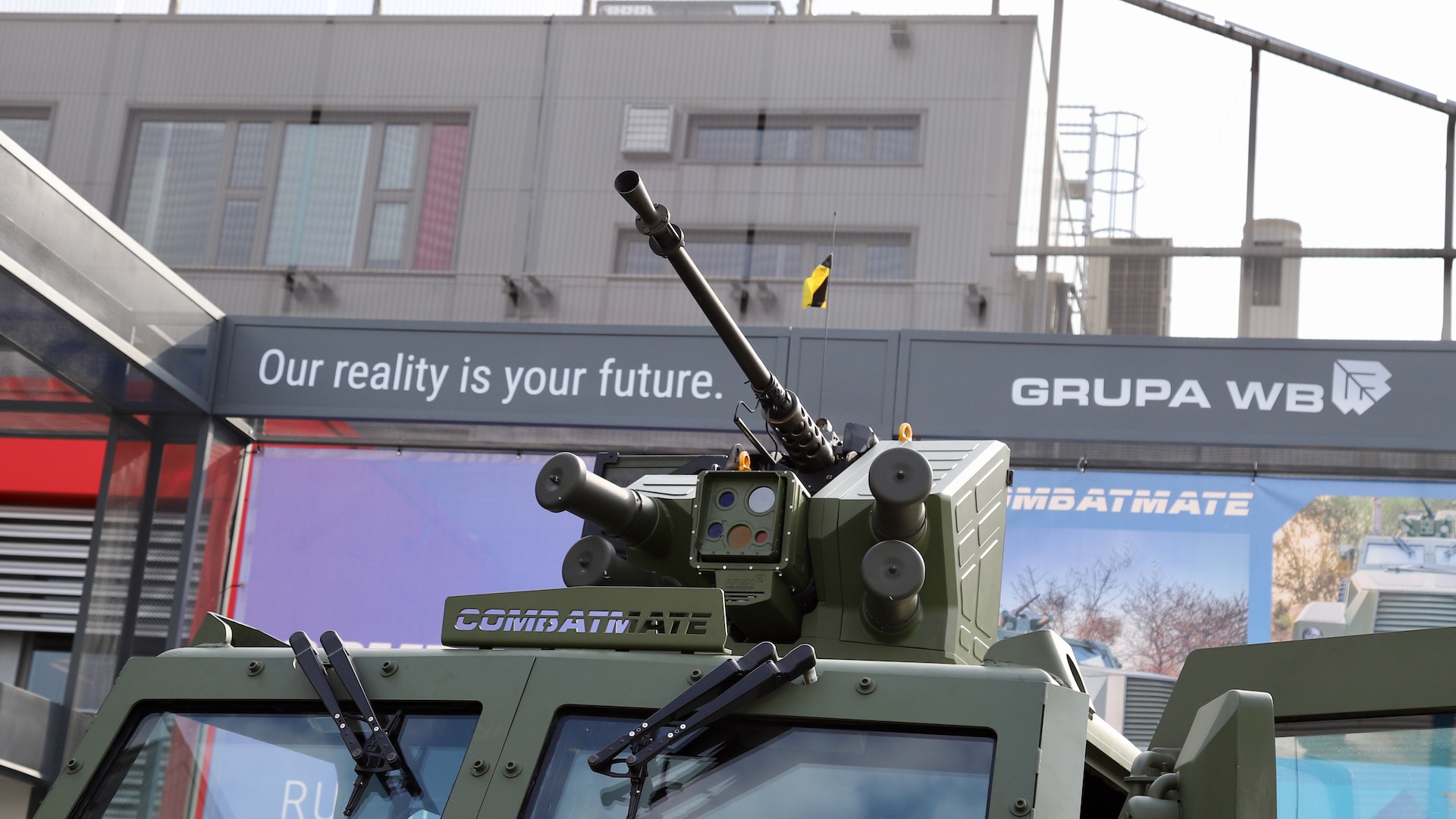
The Cradle of MRAPs
South Africa, for 50 years now, has been thriving in designing a variety of Mine-Resistant vehicles. The country is the home for iconic designs, such as the Buffel, Casspir, Mamba, or the RG-31. Solutions implemented in the aforesaid platforms have been replicated and developed for years.
Meanwhile, the contemporary conflicts in Iraq and Afghanistan created a renaissance of the mine-resistant vehicle. This class of platform has been rediscovered in Europe, or the United States of America. Bruisertech Bruiser 212 vehicle used as the base platform for Combat mate is a kind of derivative of the Mamba vehicle. However, the new design is bigger and heavier.
The Bruiser platform design aims at achieving a compromise between the levels of protection, compact size and weight, and user comfort. The vehicle is a cost-effective system that offers competitive procurement cost, low cost of lifecycle management (thanks to the simple design - easy to maintain and service), which utilizes commercial-grade components featured in the drivetrain.
The vehicle comes with the Integrated Logistics Support solution, for comprehensively managing the lifecycles within the fleet of the vehicles. ILS is a containerized solution that remains easy to transport. It may accompany the vehicles wherever the operational theater is. The system for managing the logistics is also scalable, depending on the fleet size.
The possibility to transport the vehicle in a 6-meter ISO container (once wheels and armament on top of the roof are dismantled), is an interesting and relevant feature, especially for the users who could be willing to operate the Combatmate platform during foreign deployments. This allows for the shipping of the vehicles via sea routes. They may also be transported via railway, or on the roads.
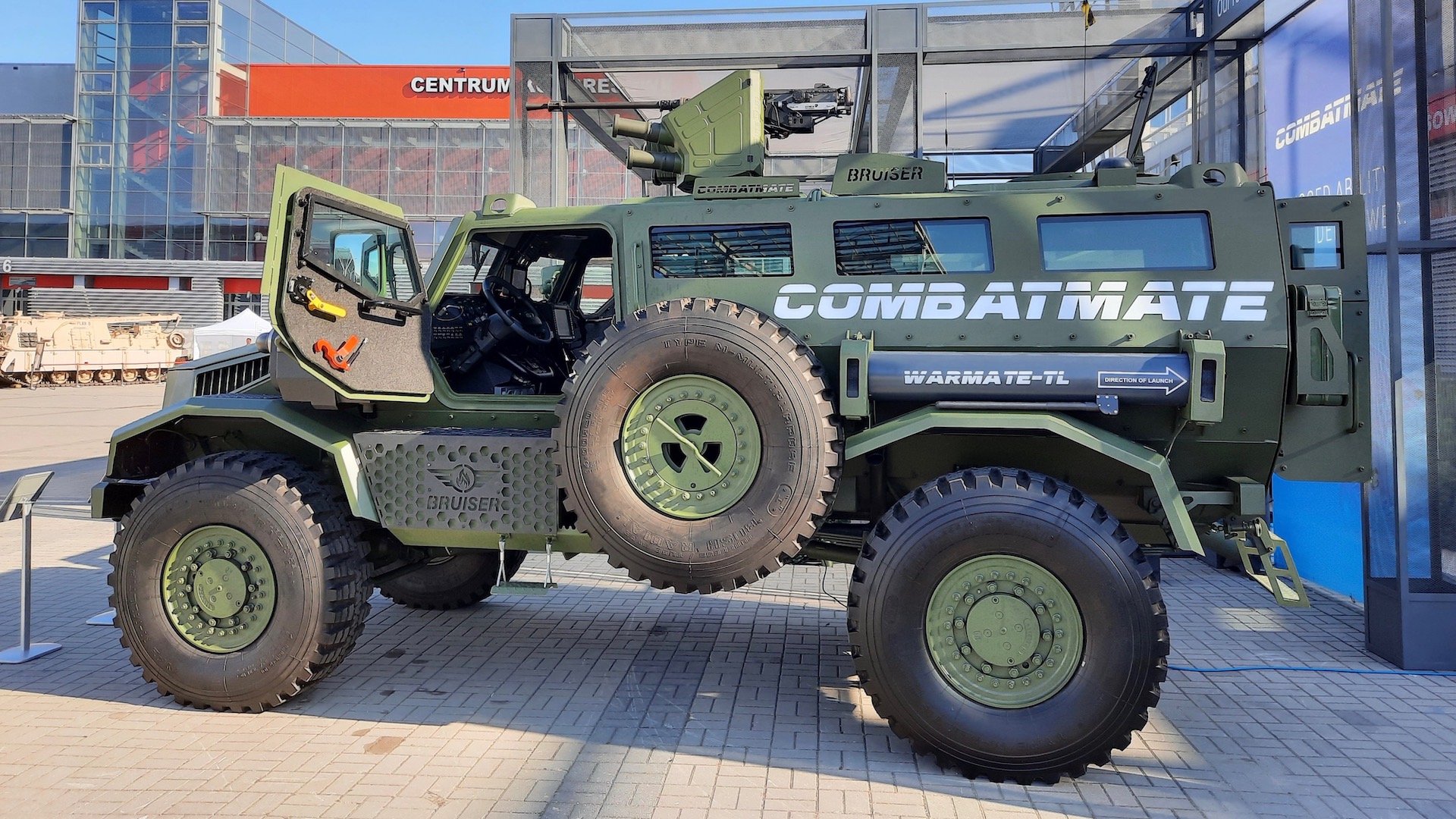
The monocoque hull features a V-shaped bottom (120-degree angle), guaranteeing STANAG 4569 Level 2 protection.
The mine resistance is compliant with the Leval 3(a) and Level 3(b) requirements of the STANAG 4569 norm. The Combatmate’s hull also protects the troops seated inside from explosions of up to 50 kilograms of TNT, 5 meters to the side of the vehicle.
The bulletproof glass of the vehicle complies with STANAG 4569 Level 2 requirements. The engine bay is also protected (STANAG 4569 Level 1).
The design layout makes it possible to arrange the vehicle's interior as per customer requirements and the purpose of the vehicle. It is also possible to create a variety of specialized vehicles - such as the C2 platform, APC, MEDEVAC Vehicle, and other variants.
Bruiser 212 can carry up to 12 troops (2+10). The driver and the commander are seated in the front, with two front doors on both sides of the hull acting as the access points for the interior. Depending on the end customer requirements, left- and right-hand drive variants are available.
The troops' compartment/cargo compartment is located right behind the driver's and commander's seats. It can accommodate up to 10 troops, seated in specially designed side seats, facing the sides of the vehicle. The seating arrangement can be tailored, depending on the purpose and on the equipment installed - such as the communications suite, armament, and so on. All seats feature four-point seatbelt harnesses.
The troops may leave the vehicle through the rear, dual door. It is also possible to evacuate the crew through a circular roof hatch, that may also be used to control the weapons systems mounted on top of the vehicle - in emergency circumstances.
Combatmate weighs 10 tonnes in the basic APC configuration, with a payload capacity of 3 tonnes. The vehicle is 5.94 m long, 2.49 m wide, and 2.66/3.01 m tall (without/with the weapons station). Its wheelbase is 3.5 meters.
Bruiser 212 is highly mobile, thanks to the specification that allows it to efficiently handle rough terrain. 4x4 drivetrain features a two-gear transmission. Furthermore, both the central, as well as axle differential can be locked.
The vehicle weight distribution is correct, with the center of gravity low enough to traverse 40% slopes and climb/descent 70% slopes. The minimum ground clearance (0.42 m) and angle of attack (37 degrees) and descent (38 degrees) contribute to the vehicle's good offroad capability. Combatmate may also go through 1.1 m water obstacles or over 0.9 m ditches. It can climb vertical obstacles that are up to 0.9 meters tall.
Engines by different manufacturers, such as Cummins or Steyr Motors, may be used - in conjunction with automatic gearboxes by Allison or ZF. The engines used are tailored to use the JP8 fuel.
The rigid AxelTech solid beams are placed on leaf springs and tailored to accommodate central tire inflation system, for 14:00x20R tires. The axles feature pneumatic disc brakes, while the braking system can be fitted with ABS.
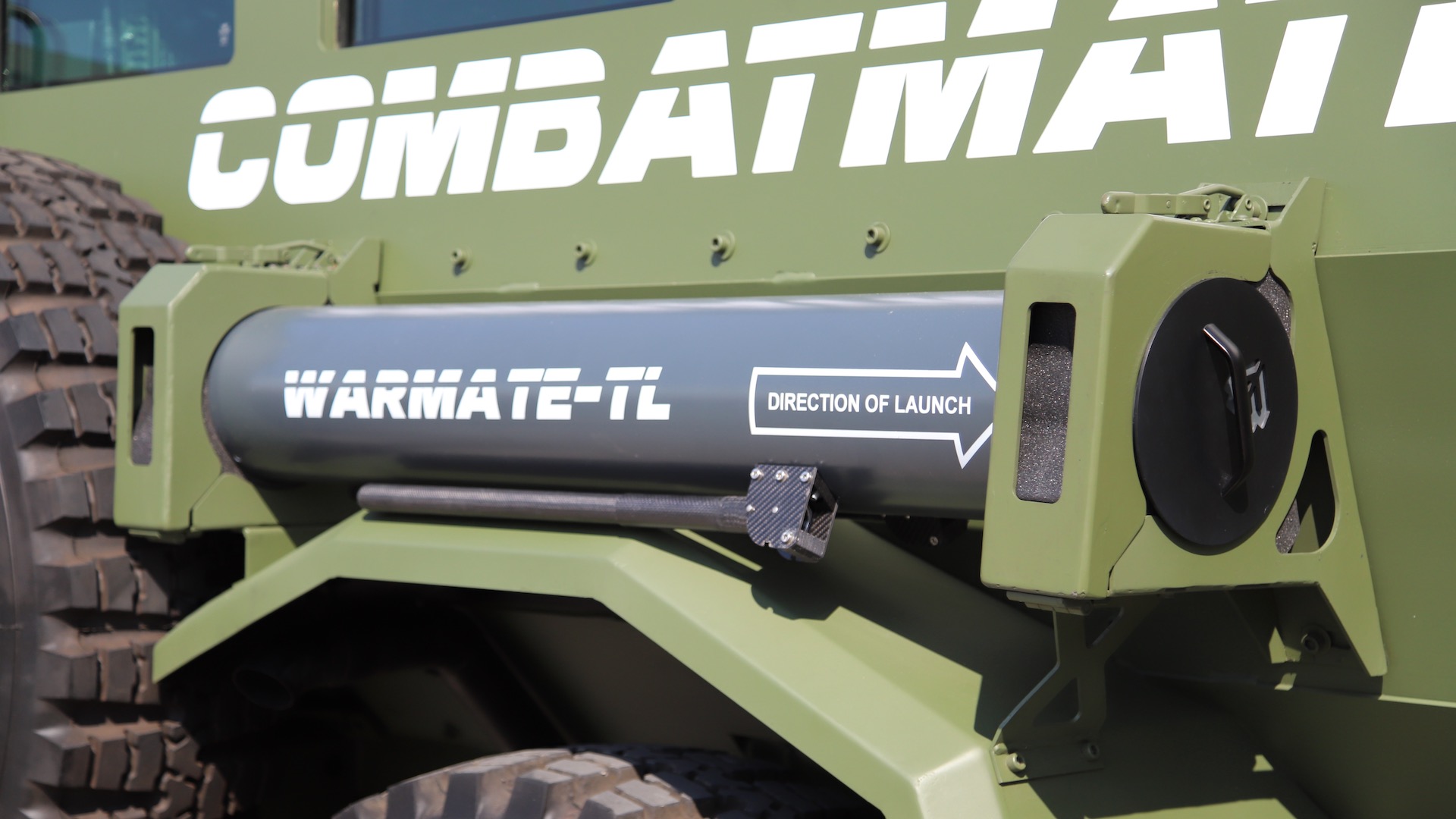
The vehicle demonstrated in Kielce features the 6-cylinder Cummins diesel engine with a power output of 268 kW and producing a torque of 1,100 Nm - it has been coupled with ZF automatic gearbox. Thanks to a proper torque/power specification, the vehicle may tow another vehicle of the same weight, even uphill.
Combatmate’s top speed has been limited to 140 kph, and its range is defined as up to 2,000 kilometers (using just the fuel in the tanks). 12 kW A/C system is among the extra pieces of equipment integrated onboard.
The main design assumption adopted for Combatmate was to deliver a versatile vehicle, in a cost-effective package. Hence the fusion of conventional solutions, and modern components and systems. The configuration of the vehicle is highly flexible. This means that it can be tailored to meet the needs of a specific customer. This will also bear some relevance in the future, should any upgrades be required across the whole fleet.
It is also yet another confirmation of the WB Group's ability to integrate C2 and weapons systems on different vehicles. Integration as such - as proven by Combatmate - has a decisive impact on the functionality and usability of the given design, thanks to the advanced profile of the adopted solutions.
